Retirement
What is an actuarial certificate?
Self-Managed Super Funds (SMSFs) may require the services of an actuary in order to claim a tax exemption in its tax return once it begins making pension payments to a member. However, there are some instances wherein actuarial certificates are not required.
What is an actuarial certificate?
Self-Managed Super Funds (SMSFs) may require the services of an actuary in order to claim a tax exemption in its tax return once it begins making pension payments to a member. However, there are some instances wherein actuarial certificates are not required.

Whether it is necessary to obtain an actuarial certificate or not depends on the method an SMSFs uses to pay out pension, the SMSF’s circumstance and the Australian Taxation Office (ATO) regulations.
Here’s a closer look at the purpose of actuarial certificates and when SMSFs need to obtain them.
What is an actuarial certificate?
Pension payments are supposed to be tax-free, but that doesn’t mean SMSFs that are already paying retirement benefits automatically receive a tax exemption. In such cases, SMSFs become partly tax-exempt and partly taxed at 15 per cent — this is where actuarial certificates come in.
An actuarial certificate is a document that actuaries provide to determine the proportion used for pension payments — after careful assessment of the fund’s underlying assets. This document, which SMSFs must obtain prior to lodging the annual tax return, indicates what percentage of the fund’s assets may claim tax exemption.

Actuarial certificates may only be obtained from licensed actuaries and typically costs somewhere between $100 and $450. If required by the ATO, the SMSF may need to obtain a certificate annually for its tax return.
The actuary assesses the SMSF’s transactions and method of pension payments to determine the tax-exempt portion. Once the assessment is done, the SMSF is given an actuarial certificate that indicates the calculated proportion and this proportion must be used to report the fund’s exempt current pension income (ECPI).
When is an actuarial certificate required?
SMSFs that pay out an income stream while also receiving contributions from members in the accumulation phase usually need to obtain an actuarial certificate annually, especially if its underlying assets are unsegregated.
There are, however, other conditions apart from being in partial accumulation and partial pension mode that SMSFs should meet before getting an actuary to assess the fund’s tax-exempt portion.
The SMSF will need to obtain an actuarial certificate if:
- A pension payout stopped partway through the financial year;
- An SMSF that is in full pension mode receives a contribution at any time during the tax year. This will commence an accumulation phase regardless if the contributed funds will immediately be used for pension payout;
- There is a change in asset segregation strategy within the tax year;
- The SMSF is in partial pension mode and assets are unsegregated;
- An SMSF member receiving pension exceeds the $1.6 million transfer balance cap and did not withdraw the excess amount. This would require the SMSF to move the excess back to accumulation phase;
- A member of the SMSF passes away and their nominated beneficiaries must be paid the death benefit in pension or lump sum; or,
- The pension is not paid out using an account-based or market-linked pension (for example: defined-benefit funds).
If an SMSF meets any of the conditions above but the amount of exempted tax and cost of obtaining an actuarial certificate provides little to no relief or outweighs it, the SMSF may opt to just pay tax instead.
Is an actuarial certificate needed in case of partial segregation?
There are three main asset segregation methods that SMSF trustees should understand: unsegregated, segregated and hybrid or partial. Here’s how to differentiate the three methods:
Unsegregated method: This refers to SMSF assets that are pooled together regardless of the fund’s current circumstance. Members in the accumulation phase continue to contribute to the assets while pensioners receive income from the same set of assets.
SMSFs with unsegregated assets should obtain an actuarial certificate to clarify which proportion of the assets are actually used to pay out pension benefits. It’s not simply a matter of dividing the income from assets equally because the amount of pension a member receives still depends on their contributions or individual account balance.
Segregated method: This refers to SMSFs that have set aside assets specifically for paying pension benefits to its members. SMSFs with segregated assets are not required to obtain an actuarial certificate as long as the market value of the asset supporting the pension does not exceed the pensioner’s account balance.
Hybrid or partial segregation method: This happens when the market value of the segregated assets for pension payouts exceed the account balance of the recipient pensioner.
For instance, Bill has an account balance of $1 million in his SMSF with Bob, but the investment property supporting his pension income stream is worth $1.5 million. In this case, the $500,000 in excess is considered as an unsegregated asset and the SMSF needs to obtain an actuarial certificate to claim a tax exemption on the segregated portion.
In essence, an actuarial certificate is required in cases of partial segregation of assets, but it would depend on whether the SMSF wishes to claim a tax exemption for the unsegregated portion of its pension-paying assets or just pay tax.
This information has been sourced from the Australian Taxation Office.
About the author

About the author


Self managed super fund
Superannuation guarantee to be paid on government paid parental leave, says ASFA
The Association of Superannuation Funds of Australia (ASFA) has hailed the government's decision to include Superannuation Guarantee payments with its Paid Parental Leave policy as a critical step ...Read more

Self managed super fund
SMSF experts advise against hasty reactions to potential super tax changes
As the Australian Government proposes a new tax measure on superannuation earnings for balances exceeding $3 million, experts from the self-managed super funds (SMSF) sector are urging members not to ...Read more

Self managed super fund
Federal government announces changes to superannuation contribution caps
The Federal Government has announced changes to the superannuation contribution caps, impacting self-managed super funds (SMSFs) and their members from 1 July 2024. Read more

Self managed super fund
SMSF Association calls for joint effort to tackle early super access
The SMSF Association is calling on a collaborative approach including the Government, the Australian Taxation Office (ATO), the Australian Securities and Investments Commission (ASIC), and the ...Read more

Self managed super fund
Rest Super members file class action over alleged insurance premium deductions
Shine Lawyers has initiated a class action lawsuit against Rest Superannuation (Rest), alleging the unlawful deduction of income protection insurance premiums from members' superannuation accounts. Read more

Self managed super fund
Debunking a superannuation tax myth: SMSF Association clarifies the impact on Aussie farms
In the ongoing debate about a proposed new tax targeting superannuation funds exceeding $3 million, the SMSF Association has stepped in to challenge claims from the Association of Superannuation Funds ...Read more

Self managed super fund
Is an SMSF right for you?
When it comes to planning for retirement, one of the most significant decisions Australians have to make is how to manage their superannuation. Read more

Self managed super fund
SMSF growth continues after pandemic peak
The statistics have begun to change coming out of the COVID-19 pandemic, according to new findings from Australian Investment Exchange Limited (AUSIEX). Read more

Self managed super fund
Superannuation guarantee to be paid on government paid parental leave, says ASFA
The Association of Superannuation Funds of Australia (ASFA) has hailed the government's decision to include Superannuation Guarantee payments with its Paid Parental Leave policy as a critical step ...Read more

Self managed super fund
SMSF experts advise against hasty reactions to potential super tax changes
As the Australian Government proposes a new tax measure on superannuation earnings for balances exceeding $3 million, experts from the self-managed super funds (SMSF) sector are urging members not to ...Read more

Self managed super fund
Federal government announces changes to superannuation contribution caps
The Federal Government has announced changes to the superannuation contribution caps, impacting self-managed super funds (SMSFs) and their members from 1 July 2024. Read more

Self managed super fund
SMSF Association calls for joint effort to tackle early super access
The SMSF Association is calling on a collaborative approach including the Government, the Australian Taxation Office (ATO), the Australian Securities and Investments Commission (ASIC), and the ...Read more

Self managed super fund
Rest Super members file class action over alleged insurance premium deductions
Shine Lawyers has initiated a class action lawsuit against Rest Superannuation (Rest), alleging the unlawful deduction of income protection insurance premiums from members' superannuation accounts. Read more

Self managed super fund
Debunking a superannuation tax myth: SMSF Association clarifies the impact on Aussie farms
In the ongoing debate about a proposed new tax targeting superannuation funds exceeding $3 million, the SMSF Association has stepped in to challenge claims from the Association of Superannuation Funds ...Read more

Self managed super fund
Is an SMSF right for you?
When it comes to planning for retirement, one of the most significant decisions Australians have to make is how to manage their superannuation. Read more

Self managed super fund
SMSF growth continues after pandemic peak
The statistics have begun to change coming out of the COVID-19 pandemic, according to new findings from Australian Investment Exchange Limited (AUSIEX). Read more








